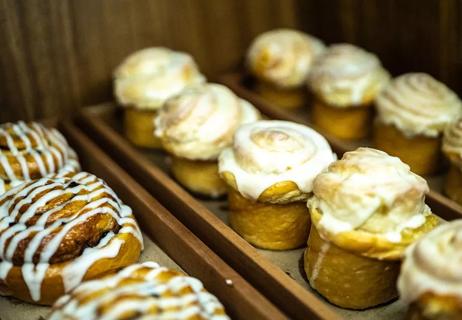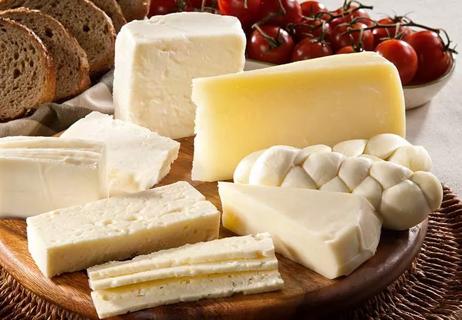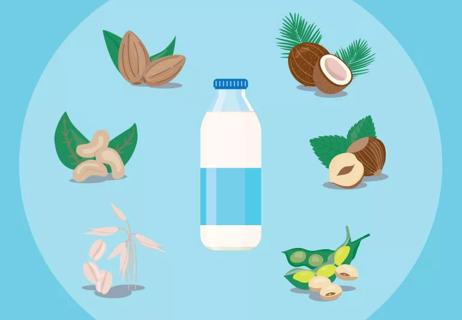No single food will increase your milk, but an overall healthy diet will help

When you choose to breastfeed (chestfeed), it’s natural to want to make sure you’re making enough milk for your baby. It’s also normal to frantically search for a surefire antidote when you start to worry that your milk supply isn’t what it should be.
Cleveland Clinic is a non-profit academic medical center. Advertising on our site helps support our mission. We do not endorse non-Cleveland Clinic products or services. Policy
So, when you hear popular folklore and read online headlines that claim certain foods will increase your milk supply, of course, you listen. And you’re tempted to take those recommendations seriously.
“People who are breastfeeding want to be sure they’re doing everything possible for the health of their baby, and that’s admirable,” says lactation specialist Marie Lattarulo, RN. “If there’s a tip to crank up milk production, they’re looking for it.”
The truth, though? There’s no solid scientific evidence that proves any particular foods will increase your milk supply.
Let’s say it again: No. Eating more apricots, fennel seeds, oatmeal, salmon or any other certain foods won’t ensure you’ll make more milk.
Disappointing? Perhaps.
But there’s good news, too. It’s this: Everything you eat makes a difference in your milk supply.
Lattarulo explains why people who are breastfeeding should stick to a well-rounded diet to keep their supply up, and why no particular foods are best for milk production.
Galactagogues are foods some people claim help you make more milk when you’re breastfeeding. They include things like:
But the problem is that none of these foods have been proven in scientific research to have any effect on milk supply. For that reason and others, the American College of Obstetricians and Gynecologists (ACOG) warns against relying on particular foods to improve milk supply.
They say, “Galactagogues should not be considered as first-line therapy because current research on the effectiveness of pharmaceutical and herbal galactagogues is relatively inconclusive and all substances have potential adverse effects.”
In other words, eating (or overeating) galactagogues isn’t likely to help you make more milk. And they could even be risky.
Lactation works primarily on the supply-and-demand principle. The more milk you put out, the more you’ll make. Your body naturally regulates your milk supply based on the demands of your baby.
In addition to feeding your baby regularly using proper breastfeeding positioning, eating an overall healthy diet can also help to encourage a healthy milk supply.
“When you’re breastfeeding, it’s important to maintain a balanced and nutritious diet to meet the demands placed on your body. Your plate should feature all five food groups — fruits, vegetables, grains, dairy and protein,” Lattarulo advises.
Of course, you can include your favorite galactagogues in your diet. Things like whole grains, nuts and legumes can certainly play a role in your healthy eating. But think of them as a part of your overall healthy diet. Not as the primary food you need to stock up on to make more milk.
Rule number one in your breastfeeding diet is to make sure you’re eating enough of a variety of healthy foods. Breastfeeding isn’t the time to consider cutting back on calories. Your body actually needs extra calories to produce milk.
“We encourage people who are breastfeeding to take in about 300 to 500 calories more than they needed pre-pregnancy,” Lattarulo says. “That’s about how many calories you use to make milk and feed your baby each day.”
Rather than worrying about choosing certain foods to increase your milk supply, aim to get plenty of nutrients in your diet to keep you and your baby healthy.
Lattarulo suggests these nutritional guidelines for breastfeeding:
Stay hydrated, too. Most providers recommend you drink at least 16 cups of water per day when breastfeeding.
“Most of us aren’t actively keeping track of how many ounces of water we drink every day, though, especially when you’re busy with a new baby,” Lattarulo notes. “So, listen to your body. Drink some water whenever you feel thirsty, and follow your body’s guidance.”
Now, there’s a reason you went searching down a rabbit hole searching for superfoods to ramp up your milk production. Breastfeeding can seem a bit like a mystery at times. Particularly because when you’re nursing your baby, there isn’t a way to know for sure how much your baby is getting.
We get it.
Healthcare providers recommend breastfeeding exclusively for the first six months of your baby’s life. But research from the U.S. Centers for Disease Control and Prevention (CDC) suggests that only about 25% of babies drink only human milk by the six-month mark.
Researchers also note that one of the major reasons for that is parents’ worries about baby not getting enough breastmilk. So, they wind up supplementing with formula. Or switching to formula altogether.
But take a deep breath. Odds are you’re doing just fine.
“It’s very typical and normal to worry about whether you’re making enough milk,” Lattarulo reassures. “But by and far, most people create plenty of milk to keep their babies healthy and growing.”
How do you know if your baby is getting enough breastmilk? Check for these signs that your milk supply is doing its job:
If you have concerns about your milk production, raise them as soon as possible with your healthcare provider, your child’s healthcare provider or a lactation consultant. They can help make sure you’re on track.
One thing is for certain, though: Any issues you encounter breastfeeding won’t be because you’re not eating specific foods.
Learn more about our editorial process.

Be sure to check the labels of common foods like canned tuna, bread, hot dogs and chocolate

This dairy product can help you lose weight, manage blood sugar and strengthen bones

Rich in calcium and protein, milk has 18 of 22 essential nutrients that your body needs

A superfood, kefir is loaded with vitamins, minerals and nutrients

Enjoy as is or change it up by adding more fruit or using low-fat dairy

Moderation is key: A good source of calcium and protein, but it’s also high in calories and sodium

Here’s what to consider when you make a trip down the dairy aisle

Your metabolism may torch 1,300 to 2,000 calories daily with no activity

A gentle touch in all the right places may help drain your sinuses